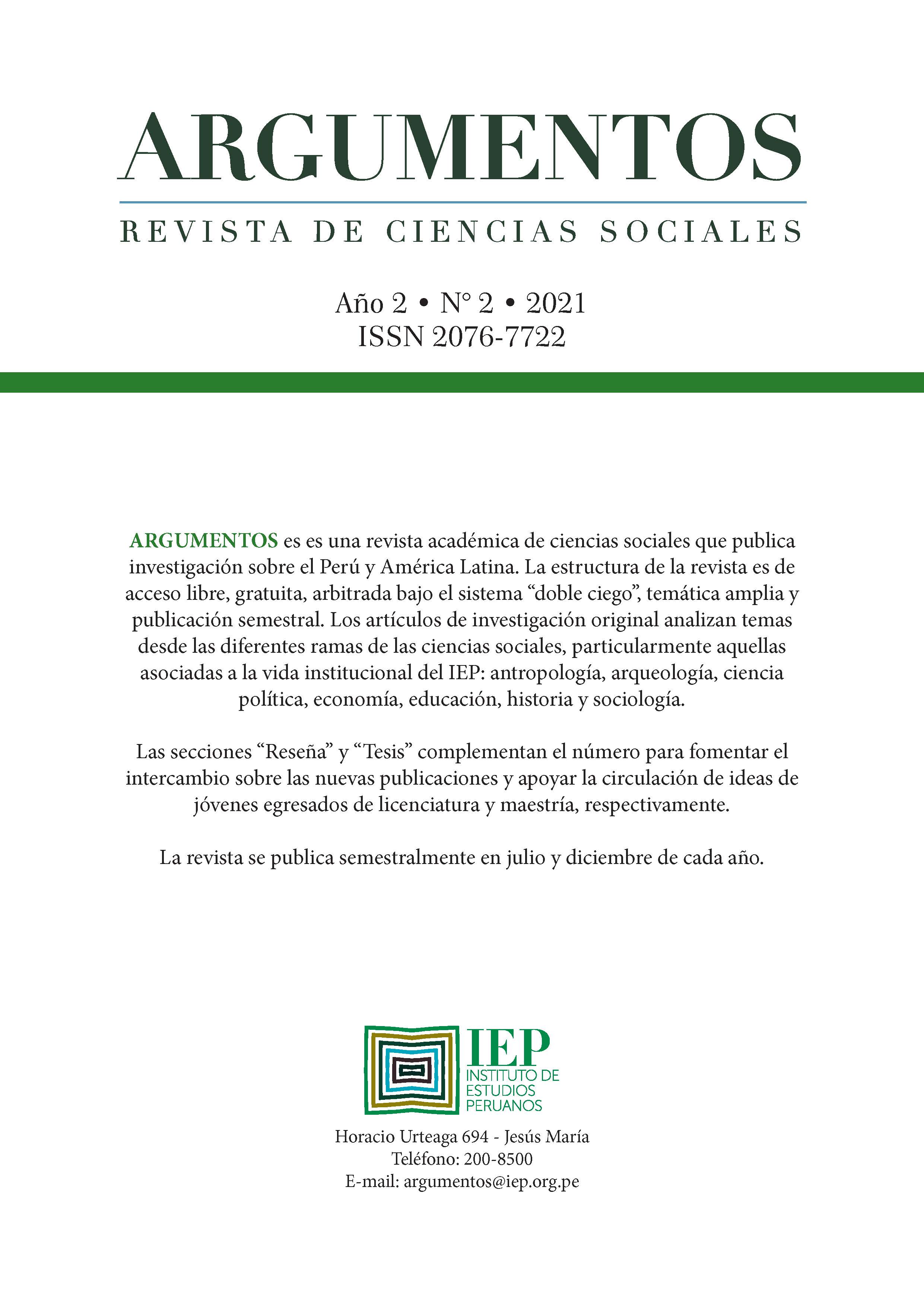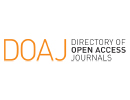Inclusión financiera transformativa centrada en las mujeres
Una renovada agenda de investigación para la igualdad de género en América Latina y el Caribe
Resumen
Sobre la base del enfoque de las capacidades de Amartya Sen, proponemos el concepto «inclusión financiera transformativa centrada en las mujeres». Tomando en cuenta este concepto, y a partir de un proceso de consulta a expertos latinoamericanos con cuatro componentes, planteamos una agenda de investigación sobre inclusión financiera e igualdad de género en América Latina y el Caribe (ALC) con cinco ejes: (i) identificar con mayor profundidad las necesidades y comportamientos financieros específicos de las mujeres en ALC, y recolectar información estadística desagregada por sexo; (ii) explorar formas para diseñar y evaluar estrategias de inclusión financiera costo-efectivas, sensibles al contexto y relevantes para las mujeres; (iii) evidenciar la existencia de limitaciones estructurales para la inclusión financiera de la mujeres, incluyendo sesgos inconscientes y normas sociales que refuerzan las exclusión por motivos de género; (iv) renovar e incrementar la producción de investigaciones rigurosas sobre la relación entre inclusión financiera, desarrollo de habilidades blandas, auto-confianza y empoderamiento multidimensional; y (v) explorar formas viables en las que las nuevas tecnologías pueden contribuir a ampliar la inclusión financiera de las mujeres, tomando en consideración la diversidad territorial, así como los diferentes niveles de desarrollo de infraestructura de información y comunicaciones.
Citas
Alliance for Financial Inclusion (AFI). (2011). Measuring Financial Inclusion: Core Set of Financial Inclusion Indicators. Recuperado de: https://www.afi-global.org/sites/default/files/publications/afi%20fidwg%20report.pdf.
Alkire, S., Meinzen-Dick, R., Peterman, A., Quisumbing, A., Seymour, G., y Vaz, A. (2013). The Women’s Empowerment in Agriculture Index. World Development, 52, 71-91. doi: 10.1016/j.worlddev.2013.06.007.
Alsop, R., Bertelsen, M. y Holland, J. (2006). Empowerment in Practice from Analysis to Implementation. Washington D.C.: World Bank.
Banerjee, A. V., Duflo, E., Glennerster, R., y Kinnan, C. (2013). The Miracle of Microfinance? Evidence from a Randomized Evaluation (MIT Department of Economics Working Paper No. 13-09). Cambridge: MIT Department of Economics. doi: https://doi.org/10.2139/ssrn.2250500.
Brody, C., Hoop, T., Vojtkova, M., Warnock, R., Dunbar, M., Murthy, P., y Dworkin, S. (2015). Economic Self‐Help group Programs for Improving Women's Empowerment: A Systematic Review. Campbell Systematic Reviews, 11(1), 1-182. doi: 10.4073/csr.2015.19
Chliova, M., Brinckmann, J., y Rosenbusch, N. (2015). Is microcredit a blessing for the poor? A meta-analysis examining development outcomes and contextual considerations. Journal Of Business Venturing, 30(3), 467-487. doi: 10.1016/j.jbusvent.2014.10.003
Clausen, J. y Trivelli, C. (2018a). Evidencia y lecciones a los diez años del Proyecto Capital. En Higinio, J. (coord.), Proyecto Capital: diez años vinculando la inclusión financiera con la protección social (pp. 338-406). Bogotá: Fundación Capital FundaK Sucursal Colombiana.
Clausen, J. y Trivelli, C. (2018b). Seguimos ahorrando: evidencia del uso de servicios financieros por las mujeres rurales. En Villada, I., Caballero, E., y Yancari, J (eds.), Proyecto Capital Perú. Evidencia e incidencia para transitar de una idea a una política pública. (pp. 39-60). Lima: IEP. Recuperado de: http://repositorio.iep.org.pe/handle/IEP/1133
Copestake, J., Morsink, M., y Remnant, F. (2019). Attributing development impact: The Qualitative Impact Protocol Case Book. Rugby: Practical Action Publishing.
Deaton, A., y Cartwright, N. (2018). Understanding and misunderstanding randomized controlled trials. Social Science & Medicine, 210, 2-21. doi: 10.1016/j.socscimed.2017.12.005
Demirgüç-Kunt, A., Klapper, L., Singer, D., Ansar, S., y Hess J. (2018). The Global Findex Database 2017: Measuring Financial Inclusion and the Fin- tech Revolution. Washington D.C., EE: World Bank. doi: doi:10.1596/978-1-4648-1259-0.
Deneulin, S. (2006). “Necessary Thickening”: Ricoeur's Ethic of Justice as a Complement to Sen's Capability Approach. En Deneulin S., Nebel M., Sagovsky N (eds.), Transforming Unjust Structures The Capability Approach (pp. 27-45), Dordrecht: Springer.
Duvendack, M., y Mader, P. (2019). Impact of financial inclusion in low‐ and middle‐income countries: A systematic review of reviews. Campbell Systematic Reviews, 15(1-2). doi: https://doi.org/10.4073/csr.2019.2.
Duvendack, M., Palmer‐Jones, R., Copestake, J. G., Hooper, L., Loke, Y., y Rao, N. (2011). What is the evidence of the impact of microfinance on the well‐being of poor people? Londres, Reino Unido: EPPI‐Centre, Social Science Research Unit, Institute of Education, University of London
Gopalaswamy, A. K., Babu, M. S., y Dash, U. (2016). Systematic review of quantitative evidence on the impact of microfinance on the poor in South Asia. Londres: EPPI‐Centre, Social Science Research Unit, Institute of Education, University College London.
Ibrahim, S., y Alkire, S. (2007). Agency and Empowerment: A Proposal for Internationally Comparable Indicators. Oxford Development Studies, 35(4), 379–403. https://doi.org/10.1080/13600810701701897.
Ibrahim, S. (2014). The dynamics of collective agency in practice: women’s fight against FGM in upper Egypt. En Ibrahim S., y Tiwari M. (eds.), The Capability Approach (pp. 52-72). Londres: Palgrave Macmillan.
Kennedy, C., Fonner, V., O'Reilly, K., y Sweat, M. (2014). A systematic review of income generation interventions, including microfinance and vocational skills training, for HIV prevention. AIDS Care, 26(6), 659-673. doi: 10.1080/09540121.2013.845287
Linares, J., y Su, Y. H. (2020). Measuring Capabilities: Using Financial Diaries in Bangladesh. En Beck, V., Hahn, H., y Lepenies, R. (eds). Dimensions of Poverty (pp. 385-404). Cham: Springer.
Malapit, H., Quisumbing, A., Meinzen-Dick, R., Seymour, G., Martinez, E., y Heckert, J., Rubin, D., Vaz, A., y Yount, K. M. (2019). Development of the project-level Women’s Empowerment in Agriculture Index (pro-WEAI). World Development, 122, 675-692. doi: 10.1016/j.worlddev.2019.06.018.
Naciones Unidas (UN). (2015). Transformar nuestro mundo: la agenda 2030 para el Desarrollo Sostenible. Recuperado de: https://unctad.org/meetings/es/SessionaDocuments/ares70d1_es.PDF
Narayan, D. (2005). Measuring Empowerment: Cross Disciplinary Perspectives. Washington D.C.: World Bank.
N'dri, L., y Kakinaka, M. (2020). Financial inclusion, mobile money, and individual welfare: The case of Burkina Faso. Telecommunications Policy, 44(3), 101926. doi: 10.1016/j.telpol.2020.101926.
Orton, L., Pennington, A., Nayak, S., Sowden, A., White, M., y Whitehead, M. (2016). Group-based microfinance for collective empowerment: a systematic review of health impacts. Bulletin Of The World Health Organization, 94(9), 694-704A. doi: 10.2471/blt.15.168252
Peters, M. D. J., Lockwood, C., Munn, Z., Moola, S., y Mishra, R. K. (2016). People's views and experiences of participating in microfinance interventions: A systematic review of qualitative evidence. Londres: EPPI-Centre, Social Science Research Unit, UCL Institute of Education, University College London.
Ravallion, M. (2012). Fighting Poverty One Experiment at a Time: A Review of Abhijit Banerjee and Esther Duflo's "Poor Economics: A Radical Rethinking of the Way to Fight Global Poverty". Journal of Economic Literature, 50(1), 103-114.
Roa, M.J., (2015). Financial Inclusion in Latin America and the Caribbean: Access, Usage and Quality (Research Papers 19). México D.F.: Centro de Estudios Monetarios Latinoamericanos.
Robeyns, I. (2017). Wellbeing, Freedom and Social Justice: The Capability Approach Re-Examined. Cambridge: Open Book Publishers. doi: http://dx.doi.org/10.11647/OBP.0130.
Robinson, M. S. (2001). The Microfinance Revolution: Sustainable Finance for the Poor. Washington D.C.: World Bank. doi: https://doi.org/doi:10.1596/0-8213-4524-9
Sahay, M. R., Von Allmen, U. E., Lahreche, A., Khera, P., Ogawa, S., Bazarbash, M., y Beaton, M. K. (2020). The Promise of Fintech: Financial Inclusion in the Post COVID-19 Era (Departmental Paper No. 20/09). Washington D.C.: IMF.
Sanford, C. (2006). Del Otro Lado: Financial Behavior of Households Receiving International Remittances in the Mexico Financial Diaries. Washington D.C.: Multilateral Investment Fund.
Sen, A. (1980). Equality of What? In McMurrin, S. (Ed.), Tanner Lectures on Human Values, Volume 1, (pp. 197-220). Cambridge: Cambridge University Press.
Sen, A. (1985). Well-Being, Agency and Freedom: The Dewey Lectures 1984. The Journal of Philosophy, 82(4), 169-221. doi:10.2307/2026184
Steinert, J., Zenker, J., Filipiak, U., Movsisyan, A., Cluver, L., y Shenderovich, Y. (2018). Do saving promotion interventions increase household savings, consumption, and investments in Sub-Saharan Africa? A systematic review and meta-analysis. World Development, 104, 238-256. doi: 10.1016/j.worlddev.2017.11.018
Stewart, R., vanRooyen, C., Dickson, K., Majoro, M., y deWet, T. (2010). What is the impact of microfinance on poor people? A systematic review of evidence from Sub‐Saharan Africa. (Reporte técnico). EPPI‐Centre, Social Science Research Unit, University of London.
Stewart, R., vanRooyen, C., Korth, M., Chereni, A., Rebelo Da Silva, N., y deWet, T. (2012). Do micro‐credit, micro‐savings and micro‐leasing serve as effective financial inclusion interventions enabling poor people, and especially women, to engage in meaningful economic opportunities in low‐ and middle‐income countries? A systematic review of the evidence (Reporte técnico). EPPI‐Centre, Social Science Research Unit, University of London.
Storchi, S., Hernandez, E., y McGuinness, E. (2020). A Research and Learning Agenda for the Impact of Financial Inclusion (Focus note). Washington D.C.: CGAP.
Storchi, S., y Johnson, S. (2016). Financial capability for wellbeing: An alternative perspective from the capability approach (Bath Papers in International Development and Wellbeing, No 44). Bath: Centre for Development Studies, University of Bath.
Strøm, R. Ø., D'Espallier, B., y Mersland, R. (2016). Female Leaders and Financial Inclusion. Evidence from Microfinance Institutions. SSRN Electronic Journal. doi: http://dx.doi.org/10.2139/ssrn.2737287.
The Campbell Collaboration. (2014). Campbell systematic reviews: Policies and guidelines (Campbell Policies and Guidelines Series No. 1). Recuperado de: https://onlinelibrary.wiley.com/pb-assets/assets/18911803/Campbell%20Policies%20and%20Guidelines%20v4-1559660867160.pdf
Trivelli, C. y Caballero, E. (2018). ¿Cerrando brechas?: Las estrategias nacionales de inclusión financiera en América Latina y el Caribe. (Documento de Trabajo 245) Lima, Perú: IEP.
Trivelli, C., y Clausen, J. (2015). De buenas políticas sociales a políticas articuladas para superar la pobreza: ¿qué necesitamos para iniciar este tránsito? (Documento de Trabajo 209). Lima, Perú: IEP.
Vaessen, J., Rivas, A., Duvendack, M., Palmer Jones, R., Leeuw, F., VanGils, G., Lukach, R., Holvoet, N., Bastiaensen, J., Garcia Hombrados, J., y Waddington, H. (2014). The Effects of Microcredit on Women's Control over Household Spending in Developing Countries: A Systematic Review and Meta‐analysis. Campbell Systematic Reviews, 10(1), 1-205. doi: 10.4073/csr.2014.8
Derechos de autor 2021 Jhonatan Clausen / Carolina Trivelli

Esta obra está bajo licencia internacional Creative Commons Reconocimiento 4.0.








